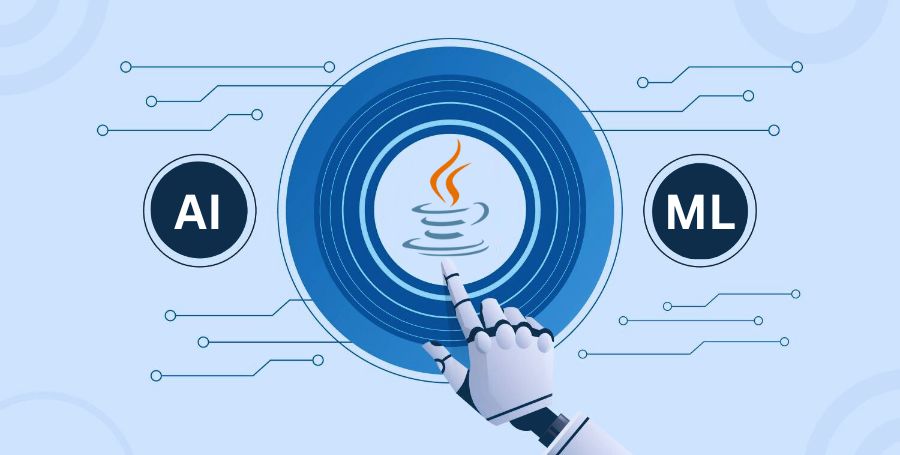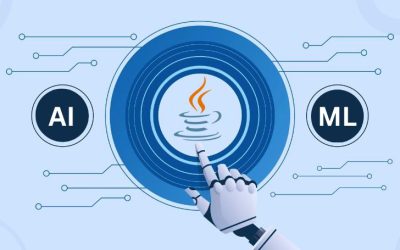The integration of traditional programming languages – Java and Blockchain; frequently starts weighty developments. The synergy between Java, a well-known programming language, and blockchain, a decentralized ledger technology that is changing many industries, is one such fascinating convergence. To better understand how Java and blockchain work together and how they influence the development of decentralized systems, we embarked on a journey in this article.
An Introduction to Java
Understanding the fundamentals of Java is essential before exploring the synergy with blockchain. Created by Sun Microsystems during the 1990s, Java is a flexible, object-situated programming language known for its movability, security highlights, and broad libraries. Java has evolved into a multi-purpose programming language that powers everything from mobile devices to enterprise-level systems. It was initially developed for the creation of applets for interactive web content.
The Key Features of Java
Platform Freedom
Java’s “Write Once, Run Anywhere” theory permits engineers to make applications that can run on any gadget with a Java Virtual Machine (JVM). This versatility has been a foundation of Java’s getting through notoriety.
Object-Situated Plan
The object-oriented nature of Java makes it easier to maintain, modularize, and reuse code. It supports the making of measured and versatile applications.
Dependable Standard Library
Complex tasks such as data manipulation and network communication can be simplified using Java’s extensive standard library. This extensive collection of libraries speeds up development and ensures project consistency.
Management of Memory
Java uses garbage man-programmed memory management. The requirement for engineers to physically dispense and deallocate memory is eliminated by this component, which decreases the probability of memory releases and improves the general solidness of Java applications.
Security
Java’s security features are widely recognized. A security supervisor is included in the Java Runtime Environment (JRE) to prevent unapproved activities and potential security threats. The language’s plan underscores a sandbox model, restricting the effect of malignant code.
Multithreading
Java facilitates the implementation of multithreaded programs, enabling simultaneous completion of multiple tasks. The java.util.concurrent package and the Thread class offer mechanisms for effective and synchronized thread management, making it possible for programmers to develop responsive and scalable applications.
Performance
Java’s exhibition has essentially worked on throughout the long term. The presentation of the Java Virtual Machine (JVM) and in the nick of time (JIT) accumulation add to streamlined execution speed. Furthermore, headways in the Java biological system, like the Area of interest VM, improve the general presentation of Java applications.
Community and Environment
Java flaunts a lively and broad local area of designers around the world. By developing libraries, frameworks, and tools, this community actively contributes to the Java ecosystem. Regular updates and upgrades ensure continuous improvement through the cooperative idea of the Java community group.
Unveiled: Blockchain
Blockchain, initially introduced as the technology behind Bitcoin, has expanded beyond its cryptocurrency roots to be a driving force in multiple industries. At its center, blockchain is a decentralized, conveyed record that records exchanges across an organization of PCs safely and straightforwardly.
Key Features of a Blockchain
Decentralization
Blockchain does not require a centralized authority because it operates on a decentralized network. This decentralization upgrades security, decreases the gamble of weak links, and encourages trust among members.
Immutability
When a block is added to the blockchain, modifying its contents is almost incomprehensible. The changelessness of blockchain information guarantees an altered safe record of exchanges, ingraining an elevated degree of uprightness.
Smart Connections
Smart contracts, which are agreements that self-execute and are incorporated directly into the code, make it possible to automate trustless transactions. They are an essential part of blockchain applications.
Agreement Systems
Consensus mechanisms are used by blockchain to validate and agree on the state of the ledger among participants in a decentralized network. Proof of Work (PoW), Proof of Stake (PoS), and Delegated Proof of Stake (DPoS) are examples of common consensus algorithms. These instruments guarantee settlement on the legitimacy of exchanges, adding a layer of trust to the decentralized framework.
Ledger Distributed
Since the blockchain is a distributed ledger, each participant in the network keeps a copy of the entire blockchain. Since there is no single point of failure or control, this redundancy ensures transparency and fault tolerance. The fact that each participant has access to the same version of the ledger fosters trust and accountability.
Cryptographic Hash Capabilities
Cryptographic hash functions protect each block of data on a blockchain. These capabilities create a fixed-size hash esteem, novel to the block’s substance. It makes it possible to quickly verify the block’s authenticity and maintain the integrity of the data.
Permissioned and Permissionless Blockchains
Depending on who can participate in the organization, delegating blockchains can be done either with or without permission.
- Permissioned Blockchain: Restricted participants with access controls and predefined roles.
- Blockchain without Permission: Open to anybody, considering a more comprehensive however possibly less controlled network.
Decentralized Applications (DApps)
Blockchain upholds the improvement of decentralized applications (DApps) that work in a distributed organization. DApps use the decentralized nature of blockchain to give users control over their data, transparency, and security.
- Shrewd Agreements in DApps: DApps frequently incorporate brilliant agreements to mechanize processes, guaranteeing trustless execution.
- Decentralized Storage: Most of the information in DApps is decentralized, upgrading security and reducing dependence on centralized servers.
Interoperability
Blockchain interoperability alludes to the capacity of various blockchain organizations to impart and cooperate flawlessly. To facilitate the transfer of data and assets between disparate networks, achieving interoperability becomes increasingly important as the blockchain ecosystem diversifies.
- Cross-Chain Platforms: Interoperability is the goal of these projects, which makes it possible for data and assets to move between different blockchains.
- Nuclear Swaps: Allows users to swap one cryptocurrency for another without going through a third party.
Java and Blockchain Joining
Java’s versatility and similarity make it a superb decision for blockchain innovation joining. Various pieces of Java supplement the fascinating ascribes of blockchain, developing the headway of decentralized applications (DApps) and undertaking level blockchain plans.
Structures and Libraries
Java offers a lot of libraries and frameworks that smooth out blockchain improvement. One exceptional model is Web3j, a lightweight Java library for integrating applications with Ethereum blockchains. Web3j enhances tasks, for instance, conveying keen arrangements, speaking with Ethereum center points, and dealing with cryptographic abilities.
Cross-Stage Limits
Java is free to run on any platform without alteration, making it a perfect match for developers who develop blockchain frameworks for various platforms.
The Formation of Brilliant Agreements
The organized idea of shrewd agreements is appropriate to the item-situated worldview of Java. While making savvy contracts, engineers can utilize laid-out coding rehearses, plan examples, and testing systems to work on the security and reliability of blockchain applications.
Different parts of Java supplement the interesting attributes of blockchain, cultivating the advancement of decentralized applications (DApps) and undertaking level blockchain arrangements.
Top Companies That Trust the Integration of Java and Blockchain
R3’s Corda
Corda is an open-source blockchain stage created by R3. It allows for the development of decentralized applications that are both secure and effective and are intended for financial sector businesses. One of the primary programming languages utilized in the development of Corda is Java.
Hyperledger Fabric
Hyperledger Texture is a blockchain structure inside the Hyperledger project facilitated by the Linux Establishment. The creation of enterprise blockchain solutions frequently involves using it. While Texture is tied to Go by default, Java is often used to create chain code (bright contracts) within the system.
Quorum by J.P. Morgan
The majority is an endeavor-centered form of Ethereum created by J.P. Morgan. It is intended for private and permissioned blockchain networks. In enterprise environments, Java is often used, and Quorum projects may use Java for certain components.
Tezos
Tezos is a decentralized blockchain that works with smart agreements and dApp improvement. When tools and interfaces are developed and integrated with the Tezos blockchain, developers often use Java, even though the Tezos platform primarily uses the Michelson language for smart contracts.
VeChainThor
Production networks, executives, and business processes can all benefit from VeChainThor’s blockchain platform. Although the platform’s smart contract language is called Viper, Java can be used to build applications and tools that support it.
EOSIO
EOSIO is a smart contract and decentralized application blockchain protocol. While the EOSIO shrewd agreement language is C++-based, Java might be utilized in the advancement of uses and administrations that collaborate with the EOSIO blockchain.
Challenges for the Future
Like both flips of the coin, Java has some particular challenges. Java’s customary engineering might confront versatility issues about exceptionally decentralized and information-concentrated blockchain networks. Blockchain and Java technologies are making ongoing advancements to address these issues.
Adaptability
Scalability remains a concern, particularly in public blockchain networks with a high demand for transaction processing. To guarantee consistent versatility, it is necessary to complement Java’s ability to handle large-scale applications with streamlined blockchain conventions and agreement systems.
Interoperability
As the blockchain biological system keeps on expanding, accomplishing interoperability between various blockchain networks becomes urgent. Java’s limitless reception can increase normalization efforts, encourage interoperability, and allow for more consistent correspondence between different blockchains.
Applicability to Brand-New Blockchain Platforms
As a result of the dynamic nature of the blockchain industry, new platforms are emerging in addition to established platforms such as Ethereum. Supporting and integrating with various blockchain platforms, each of which has unique protocols and features, will put Java’s adaptability to the test.
Conclusion
A compelling synergy exists between the robustness of a versatile programming language and the transformative potential of decentralized ledger technology at the intersection of Java and blockchain. The Java Development Company is exploring the evolving scene of innovation, the collaboration between Java and Blockchain is likely to be creative systems, welcoming the industry and preparing for the coming era of decentralized applications.
Whether in finance, supply chain, or identity management, the joined qualities of Java and blockchain offer a robust tool stash for engineers and endeavors trying to tackle the advantages of decentralization. As the two innovations evolve and balance each other, they promise a more interconnected, straightforward, and secure computerized biological system.







